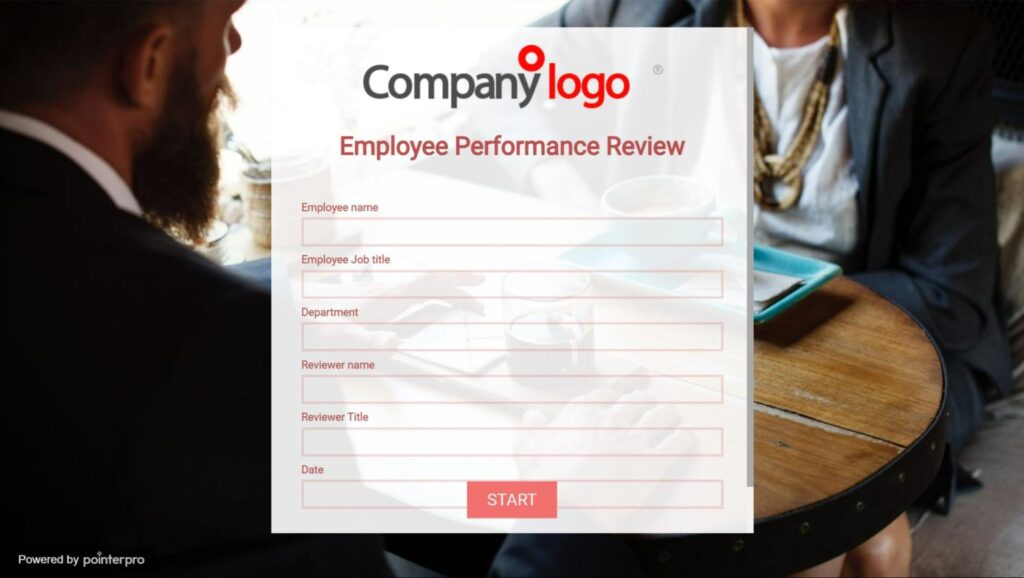There are tons of areas to assess when running or consulting for a company: Product analyses, readiness assessments, risk assessments, skill assessments, market research, employee job satisfaction surveys, etc. Of course, you want these efforts to result in a plan, asap.
The following steps are designed to help you cut to the chase:
1. Select the type of business assessment
The term “business assessment” takes on many different meanings. It could range from a SWOT analysis to an in-depth diagnosis of your various customer data.
If you were to deploy every type of business assessment known, you’d funnel resources into a furnace. You’d be wasting capital, investments, and staffing on potentially senseless assessments that you didn’t even need in the first place.
Assess the problem
First, you’d want to determine what you want to achieve with your assessment. It could be low customer satisfaction, high costs, or high employee turnover rates. While it’s convenient to fix the first problem that comes to mind, you need to dig deeper to find the root cause of the problem.
Looking at the problem closely lets you know what type of assessments you can deploy. This process will save you time and resources and help you get through the company crisis much quicker.
Select a type of business assessment
Here are the types of assessments any company can conduct. Select one, any, or all as you see fit.

SWOT Analysis
Analyzes your business’s strengths, weaknesses, opportunities, and threats. This kind of analysis analyzes the company’s current internal strengths and weaknesses and external opportunities and threats. This analysis will help business analysts decide how to traverse the market and what your company could change to turn liabilities into opportunities for growth.

Source: Corporate Finance Institute
Financial Analysis
A business assessment process can utilize different financial analyses. These types of analyses are usually handled by business management or finance firms. They assess a business’s financial performance, the returns on a particular investment, future financial projections, etc. Understanding how to calculate growth rate is fundamental in financial analysis. It helps track progress in revenue, market share, customer base, and other vital metrics. Financial analytics processes are a broad scope that is best left for another article. Shown above is a vertical analysis, a method of analyzing a company’s financial performance. This is essential to startups and small businesses.

Customer Satisfaction Analysis
This analysis seeks a potential rise (or fall) in customer satisfaction. This type of analysis gathers data from surveys, forms, recorded calls, etc., and diagnoses the company’s current customer satisfaction result. Customer satisfaction analysis is essential for customer support, customer success and customer experience improvement. As shown above, one metric for assessing customer satisfaction and success is the Net Promoter Score (NPS).
Marketing Analysis
A marketing analysis studies the market and target demographic and assesses current market trends for product development or marketing purposes. It is especially important when exploring online business ideas, as it helps identify potential gaps and opportunities in the market. Marketing analysis also looks at the current marketing efforts of a business model and how they contribute toward your business goals. For instance, if you want a strong SEO performance, you’ll need to look at your content creation and engagement strategy.
Employee Performance Analyses
These internal analyses dive deep into your workforce. They aim to assess if your employees are performing as expected, if they’re happy with their job, if morale is high in the workplace, if corporate wellness is excellent, among other things. These analyses typically come in the form of 1:1s and employee performance reviews. Employee performance analyses are handy for employee experience matters.
There are loads more types of assessments you can conduct for your business. You may even create your type of assessment depending on your organizational structure is built, and how unique and complex your problem is.

How to build automated assessment reports with Pointerpro
Here’s a quick introduction on how Pointerpro works, brought to you by one of our product Experts, Chris.
This is what clients say about us:



2. Analyze your current and future state
These internal analyses dive deep into your workforce. They aim to assess if your employees are performing as expected, if they’re happy with their job, if morale is high in the workplace, if corporate wellness is excellent, among other things. These analyses typically come in the form of 1:1s and employee performance reviews. Employee performance analyses are handy for employee experience matters.
There are loads more types of assessments you can conduct for your business. You may even create your type of assessment depending on how unique and complex your problem is.
Business assessment
Suppose your sales are down 50% in Q3 of your 2nd year. After a marketing data analysis, you find from your marketing team that fewer people have interacted and engaged with your marketing collateral on social media.
You look at all the marketing data and see a direct relationship between social media ad creative engagement and product purchases. This alignment between marketing and sales is something you’d want to highlight in your report.
Reporting
If, after your tweaks to the business model, you notice an increase in sales just like the above example, you’d want to make a report about this that you can present to your stakeholders and employees. You can use a gamma app to create visually appealing and informative reports for them.
This reporting isn’t just for documentation purposes. It will also serve as a reference for future business strategies by providing data on specific investments and practices and the results they generate. Additionally, you may even incorporate your findings on podcasts, talks, and blog articles to optimize your blog post, provide better quality content, etc., which you may leverage to grow your business.
3. Set department objectives
When it comes to business assessments, different departments will be able to provide various data and insight heading into the problem. You have a diverse team, each member having a unique skill set. So utilize them to their fullest potential and incorporate them into your assessment.
You could also provide different department objectives to different departments depending on how big-picture and long-term the objective is.
Let’s take the earlier example on sales and ad creative engagement. If that were the case, your goal is to increase the reach and engagement of your social media marketing collateral by 100% to remain profitable. That increase is the objective for the marketing department for the 4th Quarter.
Now that you have your objective(s), you should break those goals into actionable and feasible tasks.
Is this not the information you're looking for?
4. Break down the objectives into actionable goals
Once you’ve diagnosed the problem and have gone through a thorough business assessment process, you’ll need to generate goals that need to be met to achieve a specific objective.
Let’s take the previous example from the earlier Department Objectives section.
“Your goal is to now increase the reach and engagement of your social media marketing collateral by 100% to remain profitable.”
The actionable goals to achieve this 100% increase may be as follows:
- Shift your marketing team’s focus to market research to gather data about the target market’s demographics.
- Create collateral engaging with these buyer personas.
- Increase social media paid ad budget by 100% and project return on ad spend appropriately with financial analysis on projected returns.
You can then use task managing and OKR software to break these goals into weekly or daily tasks. It makes sense to add a PERT chart as a part of your assessment plan to ensure your objectives and goals are on track.
5. Create a schedule
In line with breaking your objectives into actionable goals, you should also have a timeframe for when you should meet these goals. Create a schedule. Follow this schedule to quickly drive your business to success (or out of a rut).


Tools like Pointerpro offer easy to interpret reports and visualizations, meaning that you’ll quickly be turning your data into results. These results can be put in a wide variety of charts and tables to present them to your boss, colleagues, clients or customers.

How to create a schedule
- Set a deadline for when you should accomplish your objectives.
- After you’ve broken down each objective into smaller, more actionable goals, set deadlines for these. Make sure the deadlines of these smaller goals are set up to meet the deadline of the encompassing objective.
- You’d want to keep breaking these goals down until you’ve reached a weekly deadline. Your team should be achieving something every week, contributing to accomplishing the bigger, encompassing long-term objective.
- After you’ve set all your deadlines, make it visual. A helpful visualization for a timeframe is Gantt charts for individual projects and roadmaps for your company’s ongoing initiatives. Gantt chart excel templates are also available to create these visualizations and can be a cost-effective option for small and medium-sized companies.
The visual diagrams you create from this schedule should be presentable to employees and stakeholders. Creating a schedule shouldn’t only provide your internal team with a deadline to follow, but it should also communicate goals and expected turnaround time to clients and stakeholders.
6. Monitor your data over time
Set KPIs to assess if the process you’ve implemented positively impacts performance. What’s the use of allocating time and budget to an assessment and solution if you have no idea if it’s working?
When you have solutions and business model tweaks in place, monitor how the data changes over time. You shouldn’t just be concerned with the results after the specified timeframe, but you need to see how the data changes and moves. Be sure to use advanced web analysis tools to get the information that will help you improve the quality of your campaigns.
For example, you’ve overhauled your marketing campaign’s ad creatives. You’d want to look for some movements against your expected result. That way, you can stop the marketing campaign to prevent loss of funds.
In closing
A properly executed business analysis allows a company to deploy an effective strategic plan to get the business out of a crisis or further strengthen its market positioning. An analysis is an opportunity for your business to generate an overview of itself and its environment so you and your team may develop a solution.
First, determine the kind of assessment you’ll do. Establish a baseline by determining your KPIs and assessing your current situation. Be sure to report on your findings for any solution you’ll deploy.
On the topic of a solution, set department objectives that you should achieve to meet a goal. Break these objectives into smaller tasks that you could assess weekly or monthly. Create a schedule for these tasks and enforce deadlines to meet your goals.
Monitor your assessments. You wouldn’t want redundancy for your assessments. Follow these assessment tips and create feasible, effective plans for your company.








